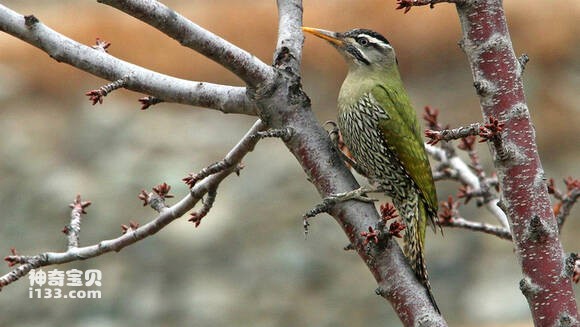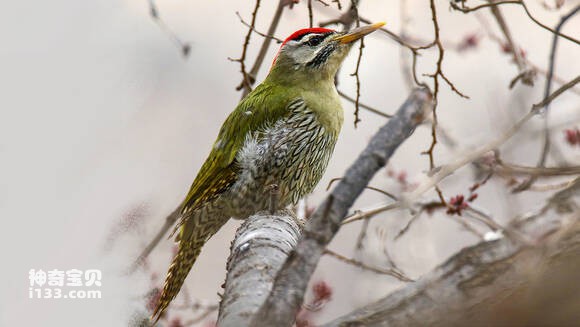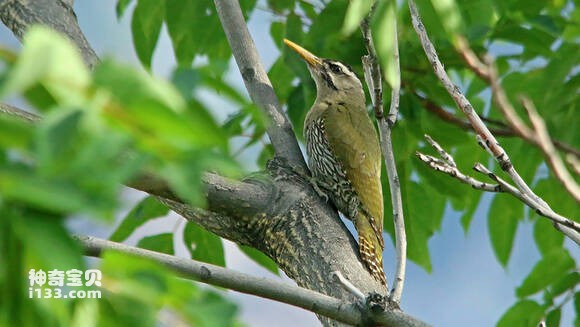Picus squamatus
IUCN
LCBasic Information
Scientific classification
- name:Picus squamatus
- Scientific Name:Picus squamatus,Scaly-bellied woodpecker
- Outline:Climbing birds
- Family:
Vital signs
- length:30-36 cm
- Weight:159-165g
- lifetime:No textual research information is available
Feature
Distribution and Habitat
The green Woodpecker is found in southern Tibet in China. Outside China, it is found in the Himalayas, Afghanistan, Baluchistan, Iran, and Turkmenistan.
Green woodpecker mainly lives in mountainous broad-leaved forests and mixed forests below 2500 meters above sea level, and also occurs in open forests and shrubland at forest margins.
Appearance
The male's forehead, crown, pillow and crown feathers are bright red. The eyes and brow line are white, and there is a black line above the brow line, between the white brow line and the red crown. There is a black cross line from the base of the mouth to the eyes, but this line disappears behind the eyes. The jaw is wide and black. The cheeks are white, gradually turning pale green to the ear coverts and the side of the neck. The back, shoulders, and wings are covered with feathered grass green, sometimes tinged with gray. The waist and tail are covered with green, and the feathering is bright yellow, sometimes all unclear green. The tail is dark brown with several broad white, yellowish-white and brown-white stripes. The primary feathers are dark brown, with white stripes on the base of the outer and inner vexes; The medial secondary feathers are green and have fine yellowish-green stripes; The outer secondary flight feathers gradually merge with the primary flight feathers. Chi
Details
Picus squamatus, Scaly-bellied woodpecker, has two subspecies。

The green woodpecker is a resident bird, usually living alone, mostly in the dead branches or dead trees of large trees and feeding, but also to the ground to feed. The call is a chimelike "klee-gu"; Occasionally, there is a long, nasal "cheenk" sound, repeated once every 10-15 seconds. The chiseled wood quivered. It mainly feeds on ants and other ants, but also eats ant eggs and other insects.
The breeding period of green woodpecker is from March to May. Nest in a hole in a tree. The hole is 0.3-5 meters high from the ground, the diameter of the hole is 5-6 centimeters, the hole is 50-60 centimeters deep, and there is no internal cushion in the hole. Each clutch lays 3-6 eggs. Oval white, oval, 28-33 mm ×21-24 mm in size.

The scaly-bellied green Woodpecker is listed on the 2012 IUCN Red List of Threatened Species ver 3.1 - Not Threatened (LC).
Protect wild animals and eliminate wild meat.
Maintaining ecological balance is everyone's responsibility!








